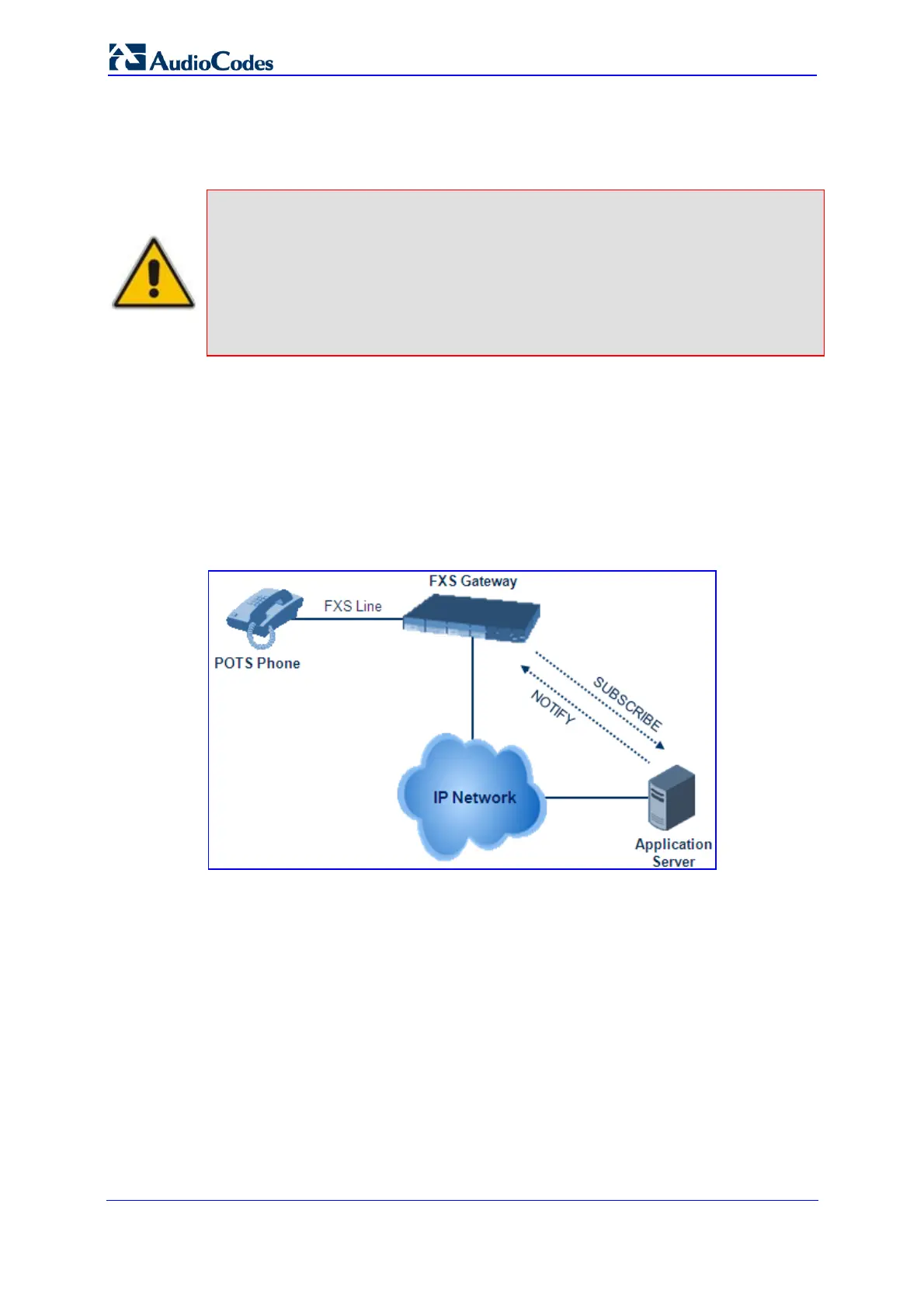SIP User's Manual 520 Document #: LTRT-12801
MP-500 MSBG
The served party (FXS interface) can be configured through the Web interface (refer to
''Configuring Call Forward'' on page 216) or ini file to
activate one of the call forward modes.
These modes are configurable per device's endpoints.
Notes:
• When call forward is initiated, the device sends a SIP 302 response with
a contact that contains the phone number from the forward table and its
corresponding IP address from the routing table (or when a proxy is used,
the proxy’s IP address).
• For receiving call forward, the device handles SIP 3xx responses for
redirecting calls with a new contact.
9.14.5 Call Forward Reminder Ring
The device supports the Call Forward Reminder Ring feature for FXS interfaces, whereby
the device's FXS endpoint emits a short ring burst (only if in onhook state) when a third-
party Application Server (e.g., softswitch) forwards an incoming call to another destination.
This is important in that it notifies the FXS endpoint user, if located next to the endpoint
phone, that call forwarding service is currently being performed.
Figure 9-38: Call Forward Reminder with Application Server
The device generates a Call Forward Reminder ring burst to the FXS endpoint each time it
receives a SIP NOTIFY message with “reminder ring” xml body. The NOTIFY request is
sent from the Application Server to the device each time the Application Server forwards an
incoming call. The service is cancelled when an UNSUBSCRIBE request is sent from the
device, or when the Subscription time expires.
The Reminder Ring tone can be defined by using the parameter CallForwardRingToneID,
which points to a ring tone defined in the Call Progress Tone file.
The following parameters are used to configure this feature:
EnableNRTSubscription
ASSubscribeIPGroupID
NRTRetrySubscriptionTime
CallForwardRingToneID

